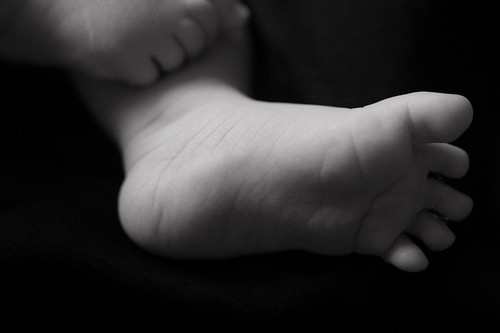China: 'Parasitic unborn twin' found in one-year-old's brain
Several such cases have been reported over the years across the world.

In a rare case of "fetus-in-fetu" reported from China, a one-year-old child was found to have her unborn twin living in her brain.
According to a new study published in the Neurology journal, the child was brought to a hospital in Shanghai with movement-related problems and an enlarged head.
The doctors said that the fetus of the unborn child had developed in the host child's brain. It was found in her forebrain and was surgically removed. A genome sequencing after the operation revealed that it was the child's twin.
"An intraventricular fetus-in-fetu, a malformed monochorionic diamniotic twin, was identified in a 1-year-old girl with motor delay and an enlarged head circumference," the study said. The unborn twin was alive due to a constant supply of blood to the brain but had stopped developing further.
"The conjoined parts develop into the forebrain of the host fetus and envelop the other embryo during neural plate folding," according to the study.
A parasitic twin is an identical twin that stopped developing during gestation but is physically attached to the fully developing twin. The parasitic twin never completes development and cannot survive on its own. Parasitic twins rarely have a complete brain or a functional heart.
Fetus in fetu is a very rare condition, occurring in only 1 in 500,000 to 600,000 births. In most cases, the dominant twin looks like a normally developed baby with extra limbs. However, without treatment, this twin may develop severe health problems from supporting the parasitic twin.
Several such cases have been reported over the years across the world. There are two theories related to a fetus in fetu's development: teratoma theory (the mass is a tumour with tissue or organ components developed from an embryo) and the parasitic twin theory (a fetus that feeds itself from its host's blood supply but is brainless so cannot exist independently).
In 2015, doctors in a Malaysian hospital discovered a fetus growing inside a 15-year-old boy's body. Mohd Zul Shahril, of Baling in Kedah, was admitted to the Sultan Abdul Hamid Hospital for surgery, after complaining of pain in his abdomen.
During the operation on Shahril, surgeons found a mass of tissue that had hair, legs, hands, and genitals—a fetus in fetu. The disturbing find was successfully removed.
There was a similar case in January 2016 in India, when surgeons found a parasitic twin growing inside an 18-year-old boy.
In another case reported from India's capital, Delhi, a 25-year-old woman gave birth to an infant with a fetus attached to its stomach. The parasitic twin had a neck and head, but no limbs. Doctors found the surgery extremely challenging as the intestines of the baby was in a sac protruding into the parasitic twin's neck, but they managed to successfully separate them.
Similarly, a dead fetus was found inside a four-year-old boy's abdomen in a village called Kharikabandh in the Midnapore district situated in India's eastern state of West Bengal, in 2015.
In 2013, a two-year-old boy in China "gave birth" to his twin, who was growing in his stomach. Xiao Feng was suffering from breathing difficulties, and his abdomen was swollen when he was admitted to the hospital.
He was rushed to surgery to have the fetus removed. Doctors found the parasitic twin took up as much as two-thirds of Feng's stomach and would have killed him if left untreated.
A similar case came to light in the central Indian city of Nagpur in June 1999, when a man named Sanju Bhagat, who had carried his parasitic "twin" inside his body for 36 years, was operated on. In March 2006, doctors in Pakistan removed two fetuses from inside a two-month-old baby girl facing the same phenomenon.
© Copyright IBTimes 2025. All rights reserved.






















